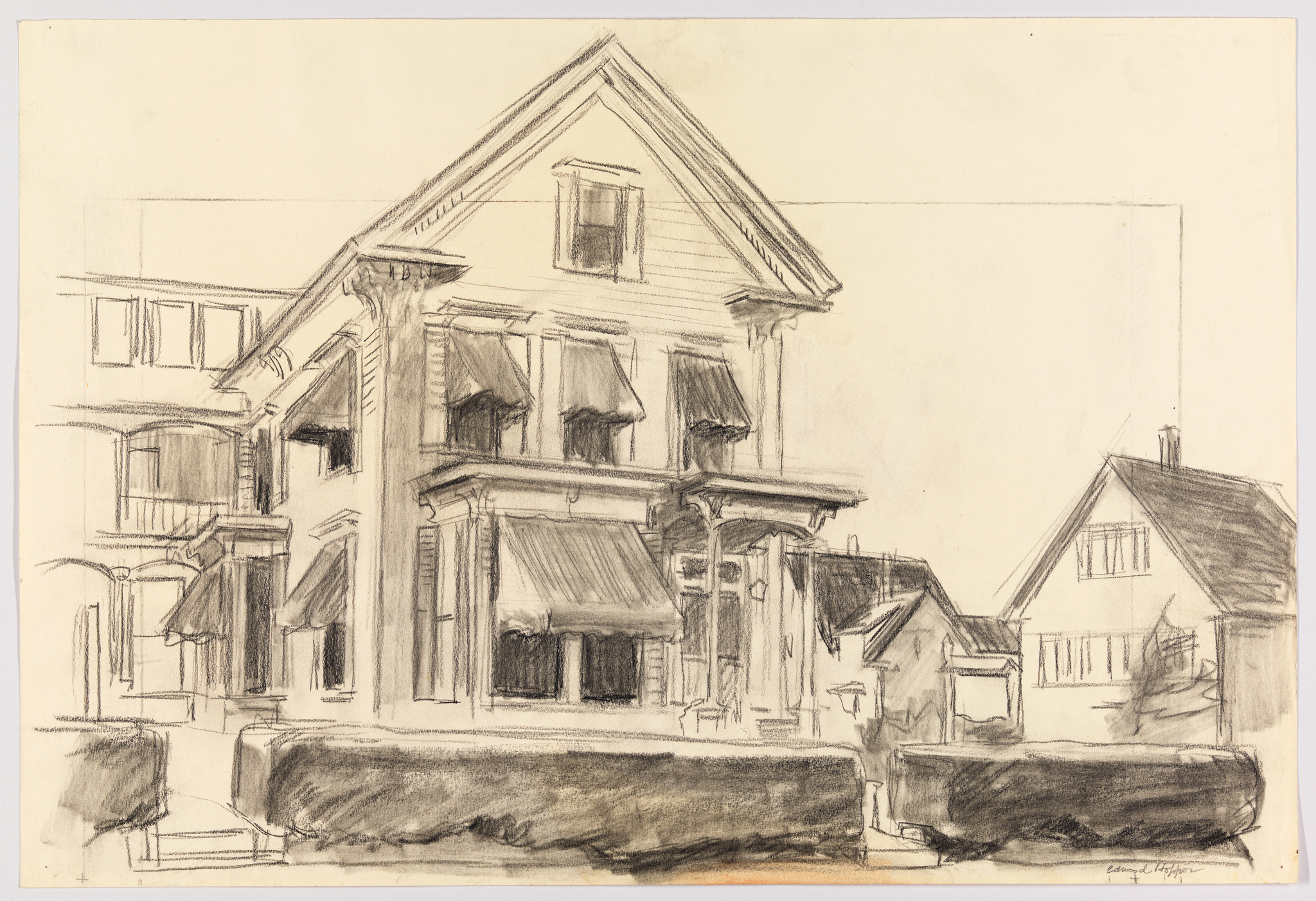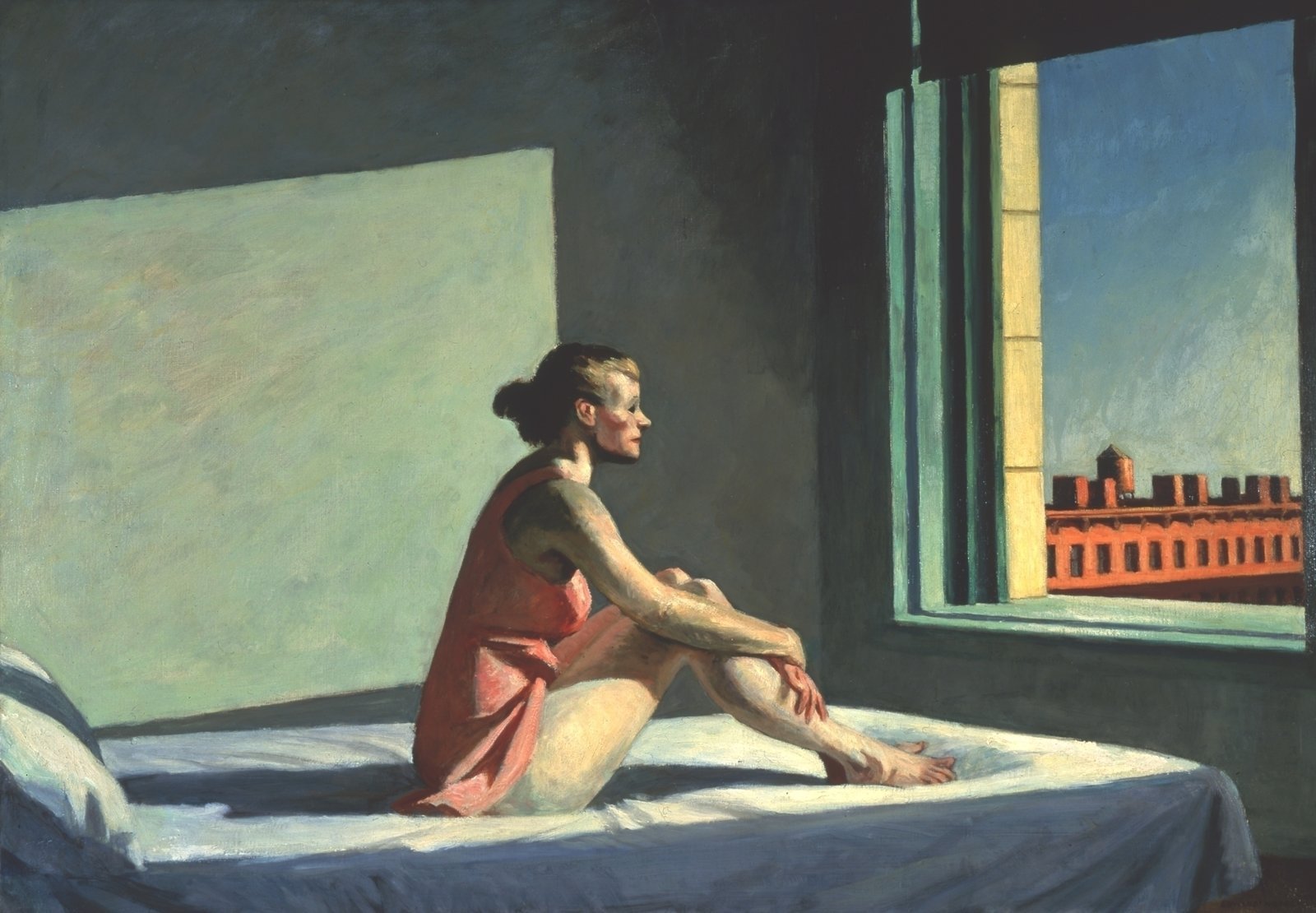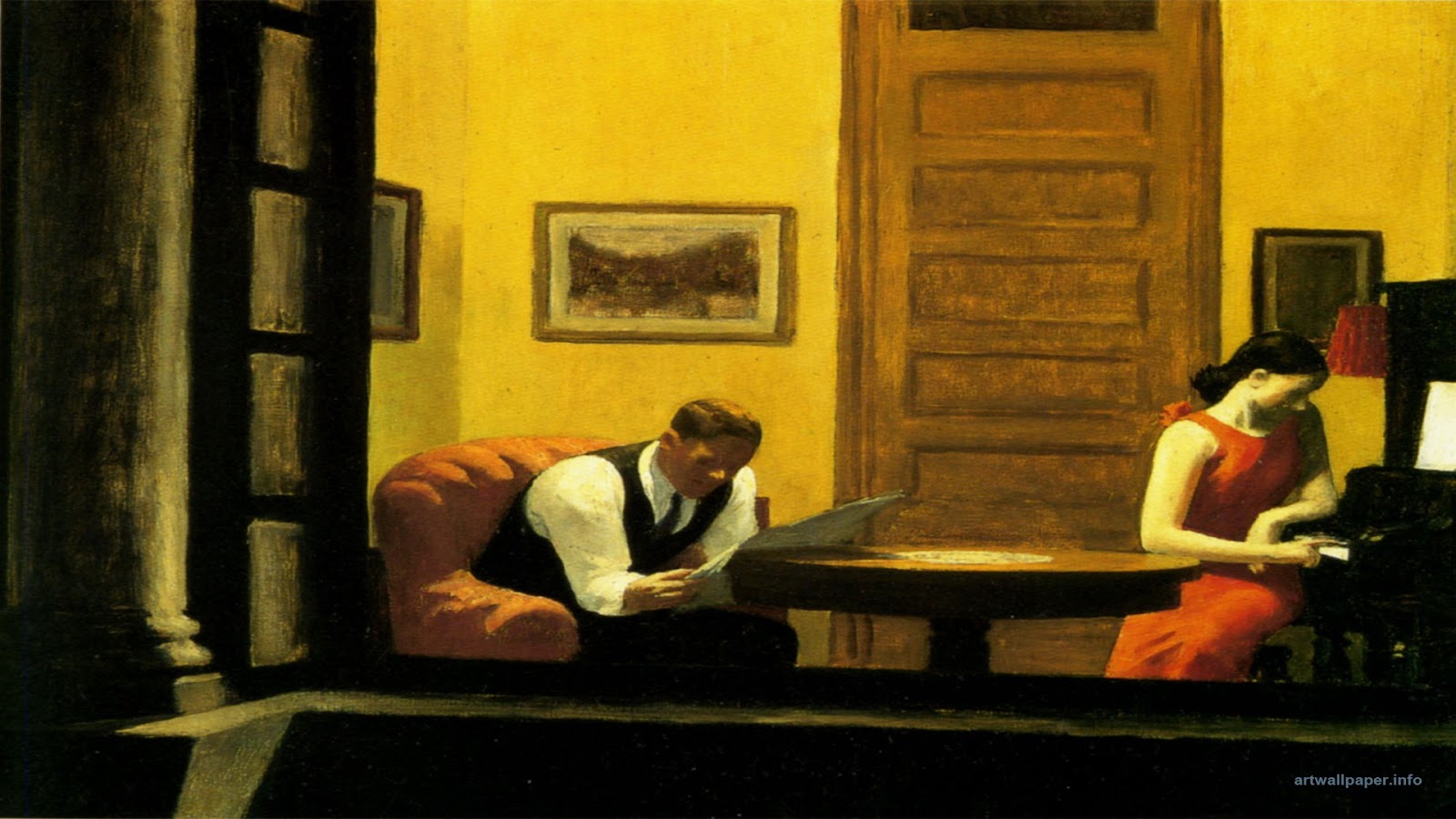Edward Hopper’s Bedroom as a Symbol

Edward Hopper’s paintings often feature bedrooms as a central motif, and these spaces are not merely literal representations of sleeping quarters. They are symbolic spaces that reflect the artist’s exploration of themes like isolation, loneliness, and the human condition.
Light and Shadow in Creating Mood
Hopper masterfully employs light and shadow to create a palpable mood and atmosphere in his bedroom paintings. He often uses a single, strong light source, such as a window or a lamp, to illuminate a specific area of the room while casting the rest in deep shadow. This contrast creates a sense of mystery and tension, suggesting the presence of unseen forces or unspoken emotions. The stark contrast between light and dark also emphasizes the feeling of isolation and detachment, highlighting the individual’s solitary existence within the room. For example, in “Room in New York City,” the strong light from the window illuminates the bed and the woman sitting on it, while the rest of the room is enveloped in shadow, creating a sense of intimacy and privacy. However, this intimacy is also tinged with a sense of melancholy and isolation, as the woman is alone in the room, seemingly lost in her thoughts.
Furniture as a Symbol of Isolation
The furniture in Hopper’s bedrooms often serves as a visual representation of the characters’ isolation and loneliness. The beds, often large and imposing, become symbols of the characters’ physical and emotional detachment from the world outside. The empty chairs and tables suggest a lack of connection and companionship. The furniture’s size and placement often create a sense of confinement and claustrophobia, reflecting the characters’ inner state of mind. For example, in “Early Sunday Morning,” the large bed dominates the room, its empty space symbolizing the emptiness in the characters’ lives. The small table and chairs, placed at a distance from the bed, reinforce the feeling of isolation and detachment.
Comparison of “Nighthawks” and “Room in New York City”
While both “Nighthawks” and “Room in New York City” feature a room, they differ significantly in their symbolism. “Nighthawks” depicts a diner, a public space where people gather and interact. However, the diner is filled with an unsettling silence and emptiness, suggesting a sense of alienation and loneliness even amidst a crowd. The characters are isolated from each other, despite being in the same space. In contrast, “Room in New York City” depicts a private space, a bedroom, where the woman is alone with her thoughts. This solitude is both comforting and isolating, suggesting a sense of introspective reflection but also a feeling of detachment from the world outside.
Bedroom Furniture in Hopper’s Work: Edward Hopper Bedroom Furniture

Edward Hopper’s paintings are renowned for their evocative depictions of American life, often focusing on the quiet solitude of individuals within their domestic spaces. His bedrooms, in particular, offer a glimpse into the artist’s fascination with the psychology of interior spaces and the objects that inhabit them. The furniture in these paintings plays a crucial role in conveying a sense of mood, isolation, and the unspoken narratives of the characters within.
Types of Furniture Depicted in Hopper’s Bedrooms
Hopper’s bedrooms typically feature a limited selection of essential furniture, reflecting the minimalist aesthetic of the era. The most common elements include:
- Bed: The bed is the central focal point of most of Hopper’s bedrooms. It is often a large, imposing piece, positioned prominently in the center of the room or against a wall. The bed’s presence is a constant reminder of the individual’s private world and their connection to the act of sleeping and dreaming.
- Dresser: A dresser, usually placed near the bed, provides a surface for personal belongings and often serves as a visual counterpoint to the bed’s bulk. The dresser, with its drawers and mirrors, symbolizes order and the routine of daily life.
- Chair: A single chair, often positioned near a window or by the bed, offers a space for contemplation or quiet reflection. The chair’s solitary presence adds to the sense of isolation and introspection that pervades many of Hopper’s bedroom paintings.
- Nightstand: A small nightstand, usually positioned beside the bed, holds essential items like a lamp, a book, or a clock. The nightstand’s proximity to the bed emphasizes the intimate nature of the bedroom and the routines of the individual.
Styles and Characteristics of Hopper’s Furniture
Hopper’s furniture is characterized by its simplicity and functionality. The pieces are often made of dark wood, with clean lines and minimal ornamentation. The furniture’s solidity and permanence create a sense of stability and permanence, contrasting with the fleeting nature of the characters’ lives.
Furniture in “Room in New York”
“Room in New York” (1932) is one of Hopper’s most famous bedroom paintings. The room is sparsely furnished, with a large double bed dominating the space. The bed is made with white sheets and a dark blanket, its starkness reflecting the emptiness of the room. A small, wooden dresser sits against the wall, its surface cluttered with a few personal items. A single chair is placed near the window, its back turned to the viewer, suggesting the presence of an unseen figure. The furniture’s simplicity and lack of ornamentation create a sense of stillness and isolation, reflecting the loneliness of the city dweller.
Hopper-Inspired Bedroom, Edward hopper bedroom furniture
Imagine a bedroom with a large, four-poster bed, its canopy draped with heavy, dark fabric. The bed is positioned against a wall, its headboard facing a window that overlooks a bustling city street. A dark wood dresser with a mirror stands opposite the bed, its surface adorned with a few personal items – a framed photograph, a book, and a small vase with a single, wilting flower. A simple, wooden chair sits near the window, its back turned to the bed, inviting the viewer to imagine the thoughts and dreams of the occupant. The room is bathed in a soft, diffused light, creating an atmosphere of quiet contemplation and introspection.
The Influence of Modernism on Hopper’s Bedroom Interiors

Edward Hopper’s paintings, particularly those depicting bedrooms, are deeply rooted in the artistic movement of modernism, which swept through the early 20th century. This influence is evident in his use of form, color, and furniture choices, reflecting the changing aesthetics and values of the time.
Hopper’s Bedrooms as Expressions of Modernist Design
Hopper’s bedrooms are characterized by a sense of stark simplicity and geometric order, aligning with the minimalist principles of modernism. The furniture is often sparse and functional, with clean lines and geometric shapes. For instance, in his iconic painting “Room in New York” (1932), a simple bed with a plain headboard dominates the scene. The geometric lines of the furniture, the stark contrast between light and shadow, and the overall sense of isolation all contribute to the modernist aesthetic.
Furniture Choices in Hopper’s Work: A Reflection of Modernist Principles
Hopper’s furniture choices further underscore his embrace of modernist principles. He frequently depicted modern furniture designs, such as the Bauhaus-inspired tubular steel chairs, which were popular in the 1920s and 1930s. These chairs, with their sleek, functional forms, symbolized the modernist ideal of simplicity and functionality. In his painting “Early Sunday Morning” (1930), a tubular steel chair sits near the window, reflecting the influence of the Bauhaus movement.
Comparison of Hopper’s Furniture Choices with Other Modern Artists
Hopper’s furniture choices were not unique. Other modernist artists, such as Pablo Picasso, Fernand Léger, and Henri Matisse, also incorporated modern furniture into their work. These artists were drawn to the clean lines, geometric forms, and functional aspects of modern furniture, which aligned with their artistic principles.
“Modernism is not just a style; it is a way of thinking about the world, and it is reflected in everything from architecture to furniture to art.” – Unknown
| Artist | Artwork | Furniture Style | Description |
|---|---|---|---|
| Edward Hopper | “Room in New York” (1932) | Simple, geometric, functional | A simple bed with a plain headboard, a geometrically shaped table, and a minimalist chair. The furniture is sparsely placed, emphasizing the empty space and creating a sense of solitude. |
| Pablo Picasso | “The Studio” (1928) | Geometric, abstract, experimental | The painting features a large, abstract chair with a geometric shape, reflecting Picasso’s exploration of cubist principles. The chair is not merely functional but serves as a sculptural element within the composition. |
| Fernand Léger | “The City” (1919) | Geometric, stylized, abstract | Léger’s painting depicts a city scene with stylized figures and buildings. The furniture, such as chairs and tables, is represented in a geometric, abstract style, emphasizing the formal elements of design. |
| Henri Matisse | “The Red Studio” (1911) | Organic, expressive, colorful | Matisse’s painting features a variety of furniture, including chairs, a table, and a bed. The furniture is depicted in a more organic, expressive style, with bold colors and flowing lines. |
Edward hopper bedroom furniture – The stark simplicity of Edward Hopper’s bedroom furniture, often depicted in his paintings, serves as a reminder that even in the most intimate spaces, functionality and form are paramount. This principle extends beyond the bedroom, influencing the design of other areas of the home, such as the bathroom.
For those seeking to inject a touch of Hopper’s minimalist aesthetic into their bathroom, exploring the world of blue bathroom cabinet ideas can provide a compelling starting point. Just as Hopper’s furniture often stood in stark contrast to the surrounding environment, a bold blue cabinet can create a focal point within the bathroom, highlighting the interplay of light and shadow and emphasizing the functional elements of the space.
Edward Hopper’s iconic depiction of a solitary figure in a stark, minimalist bedroom often highlights the importance of simple yet functional furniture. While Hopper’s paintings are not known for their detailed portrayal of interiors, the choice of furniture reflects a sense of practicality, much like the decision of choosing the best spray paint for bathroom cabinets.
A well-chosen paint can transform the look of an everyday object, just as Hopper’s masterful use of light and shadow elevates the ordinary to the extraordinary.